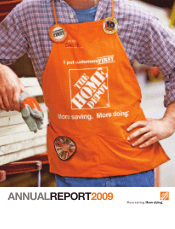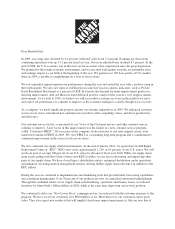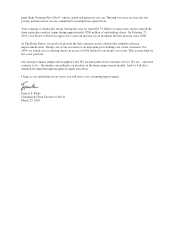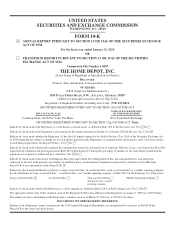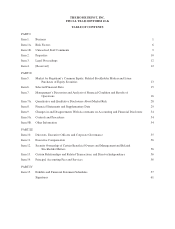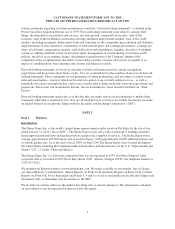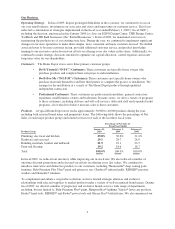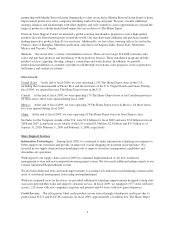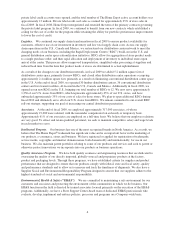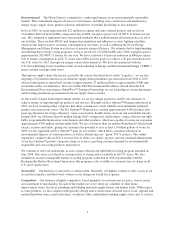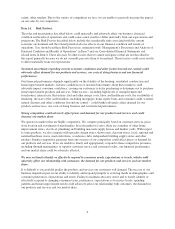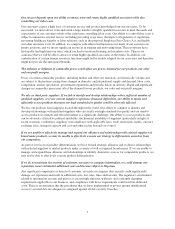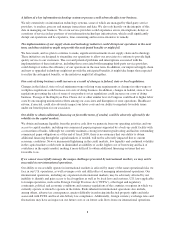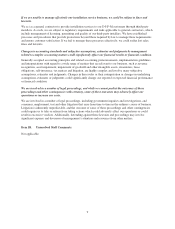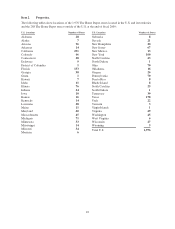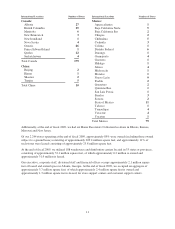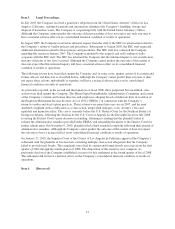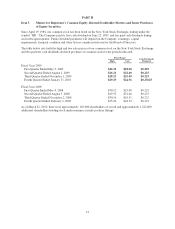Home Depot 2009 Annual Report Download - page 10
Download and view the complete annual report
Please find page 10 of the 2009 Home Depot annual report below. You can navigate through the pages in the report by either clicking on the pages listed below, or by using the keyword search tool below to find specific information within the annual report.private label credit accounts were opened, and the total number of The Home Depot active account holders was
approximately 12 million. Private label credit card sales accounted for approximately 25% of store sales in
fiscal 2009. In fiscal 2008, Home Depot renegotiated and extended the term of the primary contracts governing
the private label program. In fiscal 2009, we continued to benefit from our new contracts which established a
ceiling for the cost of credit for the program while retaining the ability for portfolio performance improvements
to lower the cost of credit.
Logistics. We continued our supply chain transformation in fiscal 2009 to ensure product availability for
customers, effective use of our investment in inventory and low total supply chain costs. Across our supply
chain operations in the U.S., Canada and Mexico, we restructured our distribution center network to meet the
changing needs of our business, including the Rapid Deployment Center (“RDC”) build-out in the U.S. and
general distribution center space rationalization initiatives. RDCs allow for aggregation of store product needs
to a single purchase order, and then rapid allocation and deployment of inventory to individual stores upon
arrival at the center. This process allows improved transportation, simplified order processing at suppliers and
reduced lead time from the time that product needs at stores are determined to actual replenishment.
As a result of the changes to our distribution network, in fiscal 2009 we added 5.2 million square feet of
distribution center space, primarily for new RDCs, and closed other distribution center operations occupying
approximately 2.4 million square feet, primarily as a result of eliminating conventional distribution center space
in the U.S. At the end of fiscal 2009, we operated 30 lumber distribution centers, 36 conventional distribution
centers and two transit facilities, all located in the U.S., Canada and Mexico. Additionally in fiscal 2009, we
opened seven new RDCs in the U.S., bringing our total number of RDCs to 12. We now serve approximately
1,250 of our U.S. stores from RDCs, which represents approximately 65% of our U.S. stores, and have
onboarded approximately 35% of our costs of sales for those stores. We plan to open additional RDCs during
fiscal 2010 and ultimately serve all of our U.S. stores from RDCs. We remain committed to our overall RDC
roll-out strategy, supporting our goal of increasing our central distribution penetration.
Associates. At the end of fiscal 2009, we employed approximately 317,000 associates, of whom
approximately 19,000 were salaried, with the remainder compensated on an hourly or temporary basis.
Approximately 61% of our associates are employed on a full-time basis. We believe that our employee relations
are very good. To attract and retain qualified personnel, we seek to maintain competitive salary and wage levels
in each market we serve.
Intellectual Property. Our business has one of the most recognized brands in North America. As a result, we
believe that The Home Depot®trademark has significant value and is an important factor in the marketing of
our products, e-commerce, stores and business. We have registered or applied for registration of trademarks,
service marks, copyrights and internet domain names, both domestically and internationally, for use in our
business. We also maintain patent portfolios relating to some of our products and services and seek to patent or
otherwise protect innovations we incorporate into our products or business operations.
Quality Assurance Program. We have both quality assurance and engineering resources that are dedicated to
overseeing the quality of our directly imported, globally-sourced and proprietary products at the factory,
product and packaging levels. Through these programs, we have established criteria for supplier and product
performance that are designed to ensure that our products comply with federal, state and local safety, quality
and performance standards and to allow us to measure and track the timeliness of shipments. We also have a
Supplier Social and Environmental Responsibility Program designed to ensure that our suppliers adhere to the
highest standards of social and environmental responsibility.
Environmental, Health & Safety (“EH&S”). We are committed to maintaining a safe environment for our
customers and associates and protecting the environment of the communities in which we do business. Our
EH&S function in the field is directed by trained associates focused primarily on the execution of the EH&S
programs. Additionally, we have a Store Support Center-based team of dedicated EH&S professionals who
evaluate, develop, implement and enforce policies, processes and programs on a Company-wide basis.
4

